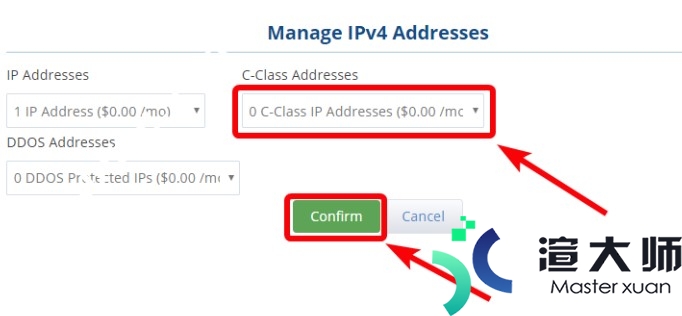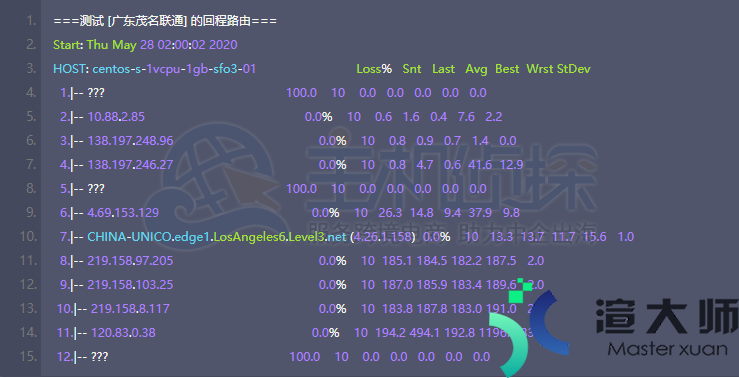大家好,今天来介绍pymongo删除数据方法(mongodb怎么存储文件)的问题,以下是渲大师小编对此问题的归纳和整理,感兴趣的来一起看看吧!
pymongo 40的'Cursor' object has no attribute 'count'异常
pymongo 模块的 Cursor 对象在 2021年11月30日 之后因为更新到 4.0 版本,删除了 Cursor 类里的 count 方法,以下是 4.0 和族游 3.12.2 两个版和虚本的 Cursor 类对比:
https://github.com/mongodb/mongo-python-driver/blob/4.0/pymongo/cursor.py
https://github.com/mongodb/mongo-python-driver/blob/3.12.2/pymongo/cursor.py
最快的解决方案是:指定一下 pymongo 的版本,不要使唤穗燃用最新的 4.0 版本
如何往mongodb存python set
下载python中MongoDB的驱动程序
pip install pymongo
然后确保MongoDB已经安装且可以正常运行,去官网下载相应版本:https://www.mongodb.com/
mkdir -p /home/tools
cd/home/tools
wget https://fastdl.mongodb.org/linux/mongodb-linux-x86_64-3.4.2.tgz
解压文件并修改目录名
tar -zxvf mongodb-linux-x86_64-3.4.2.tgz
mv mongodb-linux-x86_64-3.4.2 mongodb3.4.2
ln -s mongodb_3.4.2 mongodb
MongoDB 的可执行文件位于 bin 目录下,所以可以将其添加到PATH路径中
export PATH=/home/tools/mongodb/bin:$PATH
MongoDB的数据存储在data目录的db目录下,但是这闹祥个目录在安装过程不会自动创建,所以你需要手动创建data目录,并在data目录中创建db目录。
mkdir -p /data/db
在mongo安装目录中的bin目录执行mongod命令来启动mongdb服务
./mongod --dbpath /data/db
如果想进入MongoDB后台管理
./mongo
# ./mongoMongoDB shell version v3.4.2connecting to: mongodb://127.0.0.1:27017MongoDB server version: 3.4.2Welcome to the MongoDB shell......................
times number of files.2017-03-12T01:15:04.901+0800 I CONTROL [initandlisten]
>
使用用户 admin 使用密码 123456 连接到本地的 MongoDB 服务上
> mongodb://admin:123456@localhost/...
创建数据库(如果数据库不存在,则创建数据库慎兄,否则切换到指定数据库)
... use test2017-03-12T01:34:04.361+0800 E QUERY [thread1] SyntaxError: missing ; before statement @(shell):3:4
> use test
switched to db test> db
test> show dbs #查看所有数据库admin 0.000GB
local 0.000GB
python操作mongodb
连接mongodb
#!/usr/bin/env python# -*- coding:utf-8 -*-from pymongo import MongoClient
conn = MongoClient('192.168.0.113', 27017)
db = conn.mydb #连接mydb数据库,没有则自动创建my_set = db.test_set #使用test_set集合,没有则自动创建
插入数据(insert插入一个列宽弯袭表多条数据不用遍历,效率高, save需要遍历列表,一个个插入)
my_set.insert({"name":"zhangsan","age":18})#或my_set.save({"name":"zhangsan","age":18})
插入多条
#添加多条数据到集合中users=[{"name":"zhangsan","age":18},{"name":"lisi","age":20}]
my_set.insert(users)
#或my_set.save(users)
查询数据(查询不到则返回None)
#查询全部for i in my_set.find(): print(i)#查询name=zhangsan的for i in my_set.find({"name":"zhangsan"}): print(i)print(my_set.find_one({"name":"zhangsan"}))
更新数据
my_set.update( , #查询条件
, #update的对象和一些更新的操作符 {
upsert: , #如果不存在update的记录,是否插入
multi: , #可选,mongodb 默认是false,只更新找到的第一条记录
writeConcern: #可选,抛出异常的级别。 }
)
把上面插入的数据内的age改为20
my_set.update({"name":"zhangsan"},{'$set':{"age":20}})
删除数据
my_set.remove( , #(可选)删除的文档的条件 {
justOne: , #(可选)如果设为 true 或 1,则只删除一个文档
writeConcern: #(可选)抛出异常的级别 }
)
#删除name=lisi的全部记录my_set.remove({'name': 'zhangsan'})#删除name=lisi的某个id的记录id = my_set.find_one({"name":"zhangsan"})["_id"]
my_set.remove(id)#删除集合里的所有记录db.users.remove()
mongodb的条件操作符
# (>) 大于 - $gt# (=) 大于等于 - $gte# (<= ) 小于等于 - $lte
#例:查询集合中age大于25的所有记录for i in my_set.find({"age":{"$gt":25}}): print(i)
type(判断类型)
#找出name的类型是String的for i in my_set.find({'name':{'$type':2}}): print(i)
类型队对照列表
排序
在MongoDB中使用sort()方法对数据进行排序,sort()方法可以通过参数指定排序的字段,并使用 1 和 -1 来指定排序的方式,其中 1 为升序,-1为降序。
for i in my_set.find().sort([("age",1)]): print(i)
limit和skip
#limit()方法用来读取指定数量的数据#skip()方法用来跳过指定数量的数据#下面表示跳过两条数据后读取6条for i in my_set.find().skip(2).limit(6): print(i)
IN
#找出age是20、30、35的数据for i in my_set.find({"age":{"$in":(20,30,35)}}): print(i)
OR
#找出age是20或35的记录for i in my_set.find({"$or":[{"age":20},{"age":35}]}): print(i)
all
'''dic = {"name":"lisi","age":18,"li":[1,2,3]}
dic2 = {"name":"zhangsan","age":18,"li":[1,2,3,4,5,6]}
my_set.insert(dic)
my_set.insert(dic2)'''for i in my_set.find({'li':{'$all':[1,2,3,4]}}): print(i)#查看是否包含全部条件#输出:{'_id': ObjectId('58c503b94fc9d44624f7b108'), 'name': 'zhangsan', 'age': 18, 'li': [1, 2, 3, 4, 5, 6]}
push/pushAl
my_set.update({'name':"lisi"}, {'$push':{'li':4}})for i in my_set.find({'name':"lisi"}): print(i)#输出:{'li': [1, 2, 3, 4], '_id': ObjectId('58c50d784fc9d44ad8f2e803'), 'age': 18, 'name': 'lisi'}my_set.update({'name':"lisi"}, {'$pushAll':{'li':[4,5]}})for i in my_set.find({'name':"lisi"}): print(i)#输出:{'li': [1, 2, 3, 4, 4, 5], 'name': 'lisi', 'age': 18, '_id': ObjectId('58c50d784fc9d44ad8f2e803')}
pop/pull/pullAll
#pop#移除最后一个元素(-1为移除第一个)my_set.update({'name':"lisi"}, {'$pop':{'li':1}})for i in my_set.find({'name':"lisi"}): print(i)#输出:{'_id': ObjectId('58c50d784fc9d44ad8f2e803'), 'age': 18, 'name': 'lisi', 'li': [1, 2, 3, 4, 4]}#pull (按值移除)#移除3my_set.update({'name':"lisi"}, {'$pop':{'li':3}})#pullAll (移除全部符合条件的)my_set.update({'name':"lisi"}, {'$pullAll':{'li':[1,2,3]}})for i in my_set.find({'name':"lisi"}): print(i)#输出:{'name': 'lisi', '_id': ObjectId('58c50d784fc9d44ad8f2e803'), 'li': [4, 4], 'age': 18}
多级路径元素操作
先插入一条数据
dic = {"name":"zhangsan", "age":18, "contact" : { "email" : "1234567@qq.com", "iphone" : "11223344"}
}
my_set.insert(dic)
#多级目录用. 连接for i in my_set.find({"contact.iphone":"11223344"}): print(i)#输出:{'name': 'zhangsan', '_id': ObjectId('58c4f99c4fc9d42e0022c3b6'), 'age': 18, 'contact': {'email': '1234567@qq.com', 'iphone': '11223344'}}result = my_set.find_one({"contact.iphone":"11223344"})print(result["contact"]["email"])#输出:1234567@qq.com#多级路径下修改操作result = my_set.update({"contact.iphone":"11223344"},{"$set":{"contact.email":"9999999@qq.com"}})
result1 = my_set.find_one({"contact.iphone":"11223344"})print(result1["contact"]["email"])#输出:9999999@qq.com
还可以对数组用索引操作
dic = {"name":"lisi", "age":18, "contact" : [
{ "email" : "111111@qq.com", "iphone" : "111"},
{ "email" : "222222@qq.com", "iphone" : "222"}
]}
my_set.insert(dic)
#查询result1 = my_set.find_one({"contact.1.iphone":"222"})print(result1)#输出:{'age': 18, '_id': ObjectId('58c4ff574fc9d43844423db2'), 'name': 'lisi', 'contact': [{'iphone': '111', 'email': '111111@qq.com'}, {'iphone': '222', 'email': '222222@qq.com'}]}#修改result = my_set.update({"contact.1.iphone":"222"},{"$set":{"contact.1.email":"222222@qq.com"}})print(result1["contact"][1]["email"])#输出:222222@qq.com
python写了一个爬虫内容储存到mongodb数据库遇到一个错误不知怎么改帮忙
你不能直接存储一个雀桐租类的实例啊,mongodb用bson存储数顷兆据,bson是json的binary形式,所以你只能存储javascript的基本类型、Object和Array这些东西。像beautiful soup里面的类的实例,你可以存储关键的数据,到你再需要用的时候,取出数据再构造一个新实例,而不轮敬是把这个实例存入数据库。
mongo数据库是怎么创建索引
2种岁隐方式:
(1)mongo shell
db.yourCollectionName.createIndex({fieldName: 1})
举例:
db.gameShortLink.createIndex({shortLink: 1})
(2)pymongo代码
indexKeyList = [
迟者("fieldName", pymongo.ASCENDING),
]
mongoCollection.create_index(indexKeyList)
注:
一次性创建多个索引,举例:
import pymongo
from pymongo import IndexModel
# from pymongo import ASCENDING, DESCENDING
indexShortLink = IndexModel([("shortLink", pymongo.ASCENDING)], name="shortLink")
indexIsParseOk = IndexModel([("parsedLink.isParseOk", pymongo.ASCENDING)], name="parsedLink_isParseOk")
indexErrType = IndexModel([("parsedLink.errType", pymongo.ASCENDING)], name="parsedLink_errType")
indexRealGameName = IndexModel([("parsedGame.realGameName", pymongo.ASCENDING)], name="parsedGame_realGameName")
indexGameTheme = IndexModel([("parsedGame.gameTheme", pymongo.ASCENDING)], name="parsedGame_gameTheme")
indexModelList = [
indexShortLink,
indexIsParseOk,
indexErrType,
indexRealGameName,
indexGameTheme,
]
mongoCollectionShortlink.create_indexes(indexModelList)
详见:(百度搜)
【已解决】用mongo的shell给MongoDB创建索引以提高查询速度
【已解决】PyMongo中乎旦厅如何一次性创建多个index索引
python mongo update 会插入数据吗
update(spec, document, upsert=False, manipulate=False, multi=False, check_keys=True, kwargs)¶
Update a document(s) in this collection.
upsert (optional): If True, perform an insert if no documents match the filter.
DEPRECATED - Use replace_one(), update_one(), or update_many() instead.
上面的英文摘自pymongo的文档,默认是不插入数据态缓的,除非upsert=True,设置为True的话,表示存在记录则更新,不存在则插皮消入。
该方法已经帆握模弃用了,请使用 replace_one(), update_one(), or update_many() 来代替
本文地址:https://gpu.xuandashi.com/73255.html,转载请说明来源于:渲大师
声明:本站部分内容来自网络,如无特殊说明或标注,均为本站原创发布。如若本站内容侵犯了原著者的合法权益,可联系我们进行处理。分享目的仅供大家学习与参考,不代表本站立场!






